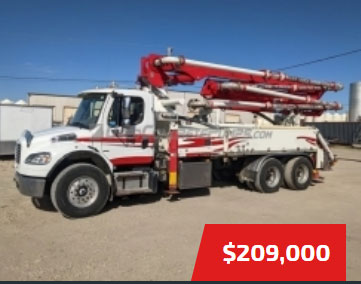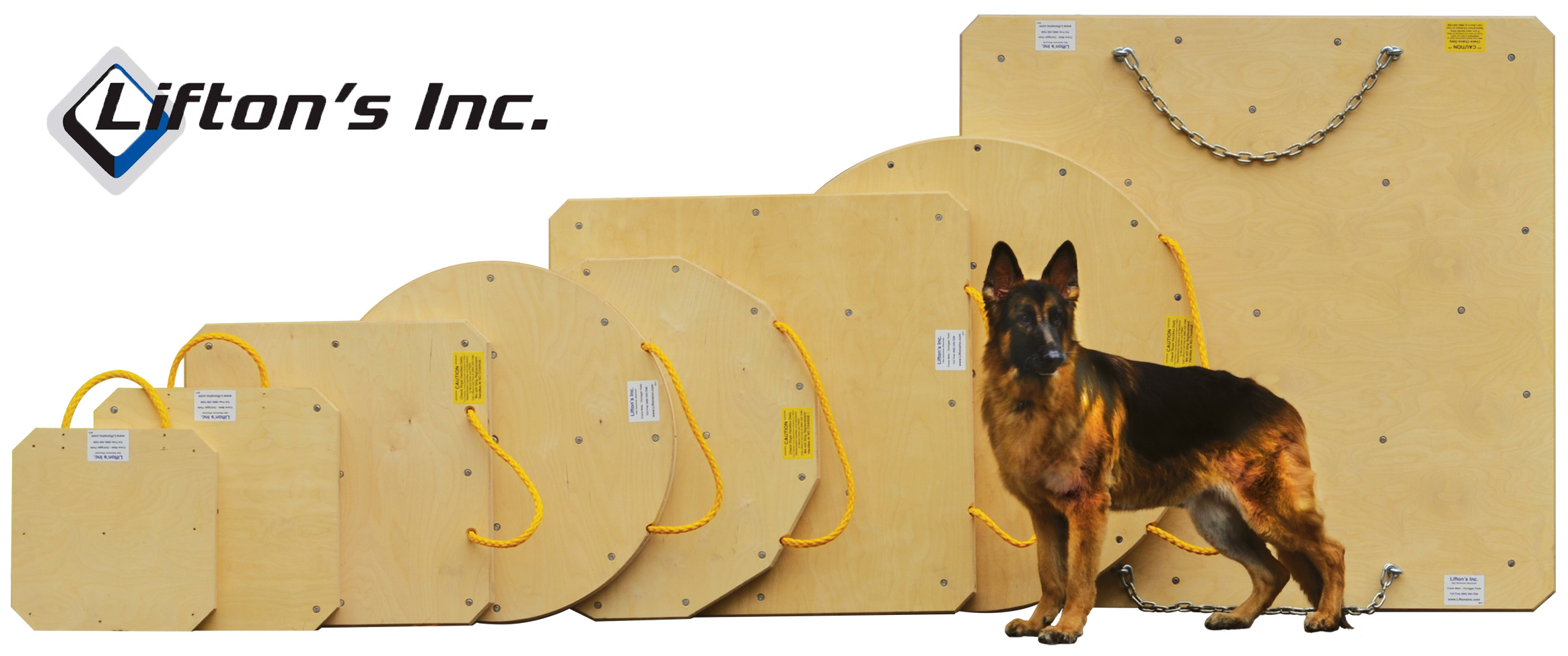| MVCP | 03-02-2009 | comment profile send pm notify |
|
Is there any thing I can do to help prevent "dry pack". Placing concrete in a wall using a 3" hose to get by re-bar, between trucks I dry pack pretty often. The mix is a 6.5 Sk using Super P to a 7-8 inch slump. Round agg. and natural river sand. The mix should pump like crazy. By the way newer reduce and hose bought at the same time. |
||
| Many | 03-02-2009 | reply profile send pm notify |
|
Actually not all that unusual even 5"-4".I wish I could explain it better other than the luck of the draw.Remember what will go through a 3" hose will also go through a 4" hose. If this happens on a daily basis then one may wish to look at a slight change in mix,slump,or possibly your delivery methods.Things like this are usually trial and error untill you figure it out.I know it's not much help but your the one on the pump.Sometimes a simple change can make you a star. Good Luck |
||
| Joe | 03-02-2009 | reply profile send pm notify |
|
another thing to do is in between l;oads kink the hose off instead of it emptying completely from gravity and if you have to bring boom down to hopper and recirculate it to keep the mud moving,the longer you sit in between load the better chance you have dry packing. And if job will allow itkeep tip seciton horizontal to the wall so it is falling faster than you are pumping and causing the drypack in the reducer...Just a thought |
||
| Bob | 03-02-2009 | reply profile send pm notify |
|
We spend an inordinate amount of our time dealing with tip hose issues. This is just one more example. We worry about whipping a lot too. I have posted the answer to those problems on the site twice; I will do it one more time as a solution to this problem of rebar penetration. From your tip 90, clamp a 4 foot overall length 5â€steel braid hose. If, as is the case here, you need to reduce, do it now with your 5x4 reducer. On the end of the 5x4 hook up a 4†PIPE of the appropriate length, always keeping in mind the weight limitations of your particular boom. A PIPE? Yes, a pipe. Why is that? Because the outside diameter of a 4†pipe is smaller than a 3†hose – and – if need be you can distort the end of a 4†pipe by gently and carefully crushing it to an oblong shape without adversely affecting the ability of the pipe to allow concrete to flow out of it. What about hose whipping, you ask. The answer is, WHAT HOSE? Reducing to a 3†hose for this application is a waste of time and a recipe for disaster, so don’t do it. |
||
| Drew AUS | 03-02-2009 | reply profile send pm notify |
|
Hmm Bob mate i dunno sounds like it would work but hanging a pipe off the boom ?? I dont think i would get a chance to put concrete through it before being kicked off site or told to put a hose on! |
||
| Bob | 03-02-2009 | reply profile send pm notify |
|
Drew, People in general don't like change. It makes them think and reason which is a real battle for the "We have always done it this way." bunch If you remove the hose whipping danger there is no real LOGICAL objection to this method. If the column or whatever was 30 ft deep no one would have a problem with clamping an overweight pipe on to do that job. |
||
| TooTall | 03-03-2009 | reply profile send pm notify |
|
MVCP, Your problem may not be in your reduction or your hose at all. It might be bleeding moisture through the cutting ring between loads because of the high slump? I have discovered that new machines do this worse than used ones. With a high slump (wetter than six inch) the constant verticle back pressure will cause water and fines to seep/bleed between the cutting ring and specticle plate creating a "dry pack" that will plug in the reducer after 7 or 8 strokes. Reversing the pump 2 full strokes after waiting for any period of time will "remix" this dry pack area and may solve your problem??? If you have ever pumped through a hose without using a gasket inside the clamp? That's the same thing that happens inside your valve with high slump material because of back pressure. If the dry pack happens right away, this is not the problem. If it is happening a few strokes after waiting for a load, this may be the problem? Try reversing the pump 2 strokes before starting again??? |
||
| pudg | 03-03-2009 | reply profile send pm notify |
|
TT and Bobs answers are the best solutions |
||
| johnjohnjohn | 03-03-2009 | reply profile send pm notify |
|
you can also try backing up the mud after the truck leaves to relieve the pressure that's pushing the water out at the tip. |
||
| 1ST Choice | 03-03-2009 | reply profile send pm notify |
|
Every load of concrete that comes has almost for certain more rock and gravel in the last couple of meters of the load. This is because the rocks roll over the top to the back of the load as the concrete comes out. This combined with sitting; the next new load which could also have more rock on the front side of the load complicates the problem. Next what 2Tall said is also a factor so simple solution is: When you get down to the last 2-3 yards on big loads and 1-2 yards on small loads stop the pour for a minute and remix the load up well; next go a head and when the load is done if your boom is in a good position, like jib hanging down pump down ½ to ¾ or more of the hopper out and then suck it back right full and when the next load comes mix it in on top of your already full hopper. That should work, good luck |
||
| Bob | 03-03-2009 | reply profile send pm notify |
|
In the older, more caveman oriented valve systems [flappers, spades etc] being plugged up after waiting for any time at all was just the way it was. In the time it took to back in the next truck you were packed off because of the leakage around the valve. The old operators got into the habit of making the first two strokes on any restart - in reverse. It made sense then and is no less useful today. Many of your problems would go away if you adopted the policy. Every time you restart the concrete - make the first two strokes in reverse. What can it hurt? ;~) |
||
| fish guy | 03-03-2009 | reply profile send pm notify |
|
if you back pump 1 or 2 strokes when you stop pumping this will help, do you have leaking gaskets fix them that will help |
||
| PourItOut | 03-03-2009 | reply profile send pm notify |
|
6.5 sack mix,,? hmmmmm,,, what are the weights on your aggragates? could be a lil heavy on the stone. In the past I have had a few problems with this and asked the job supt if he could cut the large agg back 5%.. Give it a try, or maybe bump the air up,,, just a suggestion PourItOut
|
||
| CAPTAIN VIC | 03-03-2009 | reply profile send pm notify |
|
When starting up again after waiting,Always pump in reverse two strokes before going forward just like TooTall and Bob suggest.If you ever pump a hi-rise, you will quickly learn the value of doing this as S.O.P. for every job. |
||
| TooTall | 03-03-2009 | reply profile send pm notify |
|
That's exactly where I learned this lesson Captain! High rise, placing boom jobs, and old wore out flappers and gates of course. Up here in the NW we run alot of 3" hose so it's more noticable. A while back 2 operators got brandnew pumps and complained every day about how they plugged up 8 or 10 strokes into every load. This theory made sense to one of them and he reversed the pump as needed, The other dude is probably still pounding on a reducer somewhere? I think that it happens less on pumps that are "broke in" and the cutting ring and spec. plate have found their groove? It just seems to happen more often on new pumps? |
||




















.jpg)
.gif)

.jpg)









.jpg)








